

others
Mexican Peso holds its ground against US Dollar post-US PPI data – Crypto News
- Mexican Peso trims some weekly losses as USD/MXN stays virtually unchanged.
- Mexico’s Industrial Production contracts, underscoring economic challenges, while US producer prices suggest softening inflation.
- Fed officials’ comments on inflation and monetary policy decisions reflect a cautious optimism.
The Mexican Peso depreciated modestly against the US Dollar for the third straight trading session on Thursday, following a red-hot consumer inflation report on Wednesday. Further economic data from Mexico and the United States (US) keeps the exotic pair within familiar levels, though the downtrend remains intact. The USD/MXN trades at 16.43, virtually unchanged.
Mexico’s economic docket featured the release of Industrial Production for February. The monthly reading missed estimates and contracted. On a yearly basis, data expanded below estimates but surpassed January’s reading.
Across the border, the release of prices paid by producers showed that inflation cooled a little but remains stickier than expected on the annual core reading. Monthly readings showed that the disinflation process continues to show success.
In the meantime, Federal Reserve (Fed) officials crossed newswires. The New York Fed’s Williams and Richmond Fed’s Barkin mentioned that recent data was disappointing, while the Boston Fed’s Collins added that recent data argues against the imminent need to change rates.
Daily digest market movers: Mexican Peso shrugs off hot US inflation data
- Mexico’s Industrial Production edged lower in February from the previous month and shrank -0.1% MoM, below estimates of 0.3% expansion. On a yearly basis, Industrial Production rose by 3.3% compared to the last reading, but forecasts were missed by 3.5%.
- This data, combined with the recent inflation report, which is below estimates, justified the Bank of Mexico’s (Banxico) March rate cut. However, not everything was positive news as the yearly CPI exceeded expectations.
- The US Producer Price Index (PPI) rose by 0.2% MoM in March, below the previous month’s reading. The core PPI clocked the same reading of 0.2% MoM, which is below estimates and February’s reading.
- For the twelve months to March, the PPI increased by 2.1%, exceeding February’s data. The core PPI printed above estimates, and the previous reading, at 2.4%, which was above estimates of 2.3% and February’s 2.1%.
- Initial Jobless Claims for the week ending April 6 arrived at 211K, below estimates of 215K and the prior’s reading of 222K.
- Thursday’s data, along with Wednesday’s US inflation report, prompted traders to price in two rate cuts by the Federal Reserve in 2024, according to the Chicago Board of Trade (CBOT). The December 2024 fed funds futures contract depicts it ending the year at 4.975%.
- Federal Reserve officials led by New York President John Williams and Richmond’s Thomas Barkin expressed their disappointment with recent inflation data. Both expressed there’s no need to change policy, given the actual scenario of stickier inflation and robust economic growth.
Technical analysis: Mexican Peso opposes resistance, caps the USD/MXN advance below 16.50
The USD/MXN daily chart depicts the pair consolidating near 16.40, with buyers still unable to crack the current week’s high achieved on Wednesday at 16.52. Once that area is breached, the next supply zone to challenge would be the 16.62 mark, followed by the 50-day Simple Moving Average (SMA) at 16.85 and the 100-day SMA at 16.99.
Failure at 16.50 and the USD/MXN could tumble to October’s 2015 low of 16.32 before retesting the year-to-date (YTD) low of 16.25.
Inflation FAQs
Inflation measures the rise in the price of a representative basket of goods and services. Headline inflation is usually expressed as a percentage change on a month-on-month (MoM) and year-on-year (YoY) basis. Core inflation excludes more volatile elements such as food and fuel which can fluctuate because of geopolitical and seasonal factors. Core inflation is the figure economists focus on and is the level targeted by central banks, which are mandated to keep inflation at a manageable level, usually around 2%.
The Consumer Price Index (CPI) measures the change in prices of a basket of goods and services over a period of time. It is usually expressed as a percentage change on a month-on-month (MoM) and year-on-year (YoY) basis. Core CPI is the figure targeted by central banks as it excludes volatile food and fuel inputs. When Core CPI rises above 2% it usually results in higher interest rates and vice versa when it falls below 2%. Since higher interest rates are positive for a currency, higher inflation usually results in a stronger currency. The opposite is true when inflation falls.
Although it may seem counter-intuitive, high inflation in a country pushes up the value of its currency and vice versa for lower inflation. This is because the central bank will normally raise interest rates to combat the higher inflation, which attract more global capital inflows from investors looking for a lucrative place to park their money.
Formerly, Gold was the asset investors turned to in times of high inflation because it preserved its value, and whilst investors will often still buy Gold for its safe-haven properties in times of extreme market turmoil, this is not the case most of the time. This is because when inflation is high, central banks will put up interest rates to combat it. Higher interest rates are negative for Gold because they increase the opportunity-cost of holding Gold vis-a-vis an interest-bearing asset or placing the money in a cash deposit account. On the flipside, lower inflation tends to be positive for Gold as it brings interest rates down, making the bright metal a more viable investment alternative.
-

 Technology1 week ago
Technology1 week agoSam Altman says OpenAI is developing a ‘legitimate AI researcher’ by 2028 that can discover new science on its own – Crypto News
-
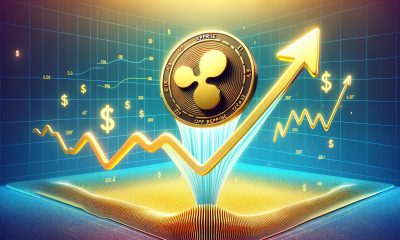
 Blockchain1 week ago
Blockchain1 week agoXRP Price Gains Traction — Buyers Pile In Ahead Of Key Technical Breakout – Crypto News
-

 De-fi7 days ago
De-fi7 days agoBittensor Rallies Ahead of First TAO Halving – Crypto News
-

 De-fi1 week ago
De-fi1 week agoNearly Half of US Retail Crypto Holders Haven’t Earned Yield: MoreMarkets – Crypto News
-

 Technology1 week ago
Technology1 week agoMicrosoft ‘tricked users into pricier AI-linked 365 plans,’ says Australian watchdog; files lawsuit – Crypto News
-

 De-fi1 week ago
De-fi1 week agoAI Sector Rebounds as Agent Payment Systems Gain Traction – Crypto News
-

 Blockchain1 week ago
Blockchain1 week agoBig Iran Bank Goes Bankrupt, Affecting 42 Million Customers – Crypto News
-
Business1 week ago
Crypto Market Rally: BTC, ETH, SOL, DOGE Jump 3-7% as US China Trade Talks Progress – Crypto News
-

 Cryptocurrency1 week ago
Cryptocurrency1 week agoBitcoin Accumulation Patterns Show Late-Stage Cycle Maturity, Not Definite End: CryptoQuant – Crypto News
-
Technology1 week ago
Ethereum Supercycle Strengthens as SharpLink Gaming Withdraws $78.3M in ETH – Crypto News
-

 Blockchain1 week ago
Blockchain1 week agoIBM Set to Launch Platform for Managing Digital Assets – Crypto News
-
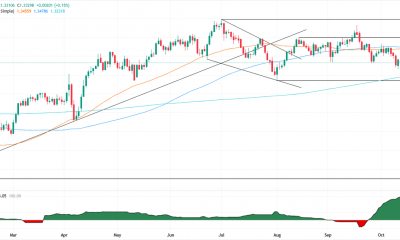
 others1 week ago
others1 week agoGBP/USD floats around 1.3320 as softer US CPI reinforces Fed cut bets – Crypto News
-

 Cryptocurrency1 week ago
Cryptocurrency1 week agoWestern Union eyes stablecoin rails in pursuit of a ‘super app’ vision – Crypto News
-
others1 week ago
Platinum price recovers from setback – Commerzbank – Crypto News
-

 De-fi1 week ago
De-fi1 week agoNearly Half of US Retail Crypto Holders Haven’t Earned Yield: MoreMarkets – Crypto News
-
others1 week ago
Indian Court Declares XRP as Property in WazirX Hack Case – Crypto News
-

 Blockchain1 week ago
Blockchain1 week agoSolana Eyes $210 Before Its Next Major Move—Uptrend Or Fakeout Ahead? – Crypto News
-

 De-fi1 week ago
De-fi1 week agoREP Jumps 50% in a Week as Dev Gets Community Support for Augur Fork – Crypto News
-

 De-fi7 days ago
De-fi7 days agoBitcoin Dips Under $110,000 After Fed Cuts Rates – Crypto News
-

 Cryptocurrency1 week ago
Cryptocurrency1 week agoUSDJPY Forecast: The Dollar’s Winning Streak Why New Highs Could Be At Hand – Crypto News
-

 Technology1 week ago
Technology1 week agoBenQ MA270U review: A 4K monitor that actually gets MacBook users right – Crypto News
-

 De-fi1 week ago
De-fi1 week agoNearly Half of US Retail Crypto Holders Haven’t Earned Yield: MoreMarkets – Crypto News
-

 Blockchain1 week ago
Blockchain1 week agoXRP/BTC Retests 6-Year Breakout Trendline, Analyst Calls For Decoupling – Crypto News
-
others1 week ago
Is Changpeng “CZ” Zhao Returning To Binance? Probably Not – Crypto News
-
Business1 week ago
Crypto ETFs Attract $1B in Fresh Capital Ahead of Expected Fed Rate Cut This Week – Crypto News
-

 De-fi1 week ago
De-fi1 week agoTokenized Nasdaq Futures Enter Top 10 by Volume on Hyperliquid – Crypto News
-

 Cryptocurrency1 week ago
Cryptocurrency1 week agoNEAR’s inflation reduction vote fails pass threshold, but it may still be implemented – Crypto News
-

 Technology1 week ago
Technology1 week agoSurvival instinct? New study says some leading AI models won’t let themselves be shut down – Crypto News
-

 De-fi1 week ago
De-fi1 week agoMetaMask Fuels Airdrop Buzz With Token Claim Domain Registration – Crypto News
-

 Cryptocurrency1 week ago
Cryptocurrency1 week agoGold Price Forecast 2025, 2030, 2040 & Investment Outlook – Crypto News
-
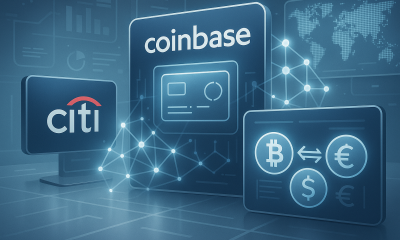
 Cryptocurrency1 week ago
Cryptocurrency1 week agoCitigroup and Coinbase partner to expand digital-asset payment capabilities – Crypto News
-

 Cryptocurrency1 week ago
Cryptocurrency1 week agoInside Bitwise’s milestone solana ETF launch – Crypto News
-

 Cryptocurrency1 week ago
Cryptocurrency1 week agoWhy Is Pi Network’s (PI) Price Up by Double Digits Today? – Crypto News
-
others1 week ago
Can ASTER Price Rebound 50% as Whale Activity and Bullish Pattern Align? – Crypto News
-

 Technology6 days ago
Technology6 days agoGiving Nvidias Blackwell chip to China would slash USs AI advantage, experts say – Crypto News
-

 Business6 days ago
Business6 days agoStarbucks Says Turnaround Strategy Drives Growth in Global Sales – Crypto News
-
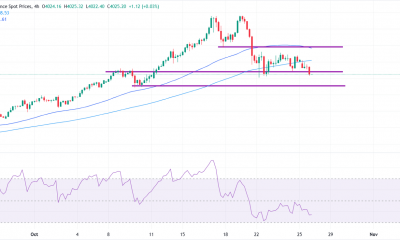
 others1 week ago
others1 week agoGold weakens as US-China trade optimism lifts risk sentiment, focus turns to Fed – Crypto News
-

 De-fi1 week ago
De-fi1 week agoCRO Jumps After Trump’s Truth Social Announces Prediction Market Partnership with Crypto.Com – Crypto News
-

 Cryptocurrency1 week ago
Cryptocurrency1 week agoKERNEL price goes vertical on Upbit listing, hits $0.23 – Crypto News
-
Technology1 week ago
Breaking: $2.6B Western Union Announces Plans for Solana-Powered Stablecoin by 2026 – Crypto News
-

 Blockchain1 week ago
Blockchain1 week agoVisa To Support Four Stablecoins on Four Blockchains – Crypto News
-

 De-fi1 week ago
De-fi1 week agoCrypto Market Edges Lower While US Stocks Hit New Highs – Crypto News
-
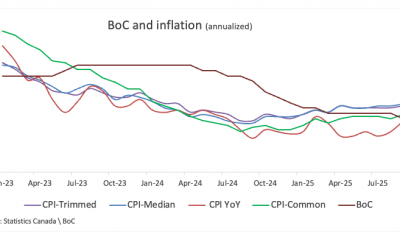
 others1 week ago
others1 week agoBank of Canada set to cut interest rate for second consecutive meeting – Crypto News
-

 others5 days ago
others5 days agoMETA stock has lower gaps to fill – Crypto News
-

 Blockchain1 week ago
Blockchain1 week agoThe Next Era Of Crypto Belongs To Decentralized Markets – Crypto News
-

 Technology1 week ago
Technology1 week agoInstagram finally lets you relive every Reel you’ve watched with ‘Watch History’ feature – Crypto News
-
Business1 week ago
Trump Tariffs: Secretary Bessent Declares ‘Fantastic’ Trump–Xi Talks, Bitcoin Breaks $113,000 – Crypto News
-

 Cryptocurrency1 week ago
Cryptocurrency1 week ago‘Moments of the Unknown’: Justin Aversano Shares Globetrotting Love Letter to Humanity – Crypto News
-

 Blockchain1 week ago
Blockchain1 week agoThe Bitcoin Stock-To-Flow ModelIsn’t the Best BTC Forecast Model: Analyst – Crypto News
-
others1 week ago
GBP flat vs. USD with notably muted reaction to retail sales & PMI data – Scotiabank – Crypto News






